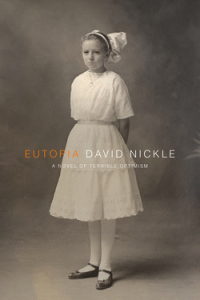The Psychopath Test by Jon Ronson
 Sunday, May 22, 2011 at 12:45PM
Sunday, May 22, 2011 at 12:45PM 
Published by Riverhead on May 12, 2011
The Psychopath Test is fundamentally about the mental health community's obsession with labeling people -- an obsession that feeds into the nation's intolerance of nonconformity. Although The Psychopath Test is a very funny book, it touches on serious issues, including the increasingly common misdiagnosis of childhood bipolar disorder, the over-diagnosis of autism, and the delight that pharmaceutical companies take in the explosion of newly-discovered disorders.
Jon Ronson's entertaining romp through the mental health industry starts with an expensively produced book called Being or Nothingness (half the pages are blank) that puzzled recipients around the world. Investigating that mystery (and questioning the mental health of its author) led Ronson to wonder whether "madness was everywhere," which motivated him to page through the formidable Diagnostic and Statistical Manual of Mental Disorders (finding, as every honest person would, a few categories into which he might fall). Further investigation brought him to the Scientologists (a group that takes a dim view of psychology), who pointed him to an institutionalized individual who had been labeled (inappropriately, according to the Scientologists) a psychopath.
I think it's telling that when Ronson asked to interview Bob Hare, whose psychopathy checklist (the PCL-R) is widely used to "identify" psychopaths, Hare told him he could have an interview if he paid £600 to attend his seminar. The link between money and "the madness industry" (to quote the book's subtitle) is one of Ronson's stronger points, one that merits a book of its own.
It's ironic that Hare's initial research into psychopathy involved giving painful electric shocks to test subjects and that Hare feels he did nothing wrong (notably, a lack of empathy and lack of remorse are two of the criteria the PCL-R uses to label individuals as psychopaths). Hare also thinks that his research results are "a really big story" that could "forever change the way people see the world" (a grandiose sense of self-worth is another of the criteria). Interestingly, Hare would score himself only a 4 or 5 of 40 on the PCL-R while one of his critics would score him 29 or 30. Admittedly, both of the scorers are biased (the critic is a Scientologist) but that's the point: scores depend largely upon the subjective impressions of the scorers rather than scientifically measurable facts, rendering the PCL-R (like many rating instruments) of dubious value.
Seduced by the illusory clarity of the PCL-R, Ronson begins to pin the psychopath label on people he meets after momentary interactions. To be fair, Hare does the same. Hare tells Ronson that a hotel concierge who objected to Ronson's uninvited use of his telephone was a psychopath when it seems to me the concierge had a right to be upset.
The most important sentence in Ronson's book, I think, is this: "I now felt that the checklist was a powerful and intoxicating weapon that was capable of inflicting terrible damage if placed in the wrong hands." True enough, although I wonder whether anyone has the right hands. Hare does have the good grace to acknowledge that the PCL-R can be misused, pointing to the role it plays in the United States as a justification for labeling individuals as sexually violent persons. (It's actually the least important rating instrument used for that purpose; the others, supposedly more specific to sexual violence, are flawed and none have any predictive value in determining who will and who won't commit sex offenses in the future.) Of course, Hare's stated concern about the misuse of the PCL-R to label individuals as sexual predators doesn't stop him from coming to the United States to make money teaching psychologists how to use it for that very purpose.
The Psychopath Test does meander a bit. There's an amusing chapter on David Shayler's loony conspiracy theories and another that discusses a criminal profiler whose profile matched an innocent person more closely than the actual killer, leading to the innocent's arrest and prolonged incarceration while the criminal was left free to kill again. Exposing the goofiness of conspiracy theories and the myth that profilers can identify the guilty on the basis of glib assumptions about criminal behavior is useful but not on point with the rest of the book. Still, the tone of Ronson's book is light and chatty -- it isn't a polemic -- and he can be forgiven for straying off point for the sake of telling a good story. Those who are wedded to the efficacy of labeling individuals with mental disorders might be put off by this book, but I thought it was great fun.
RECOMMENDED



